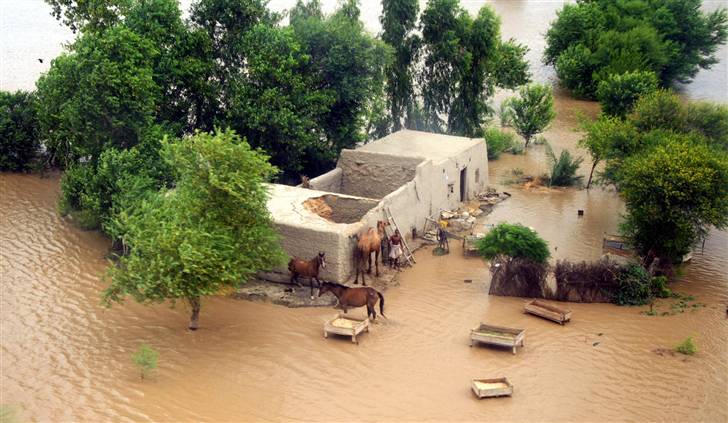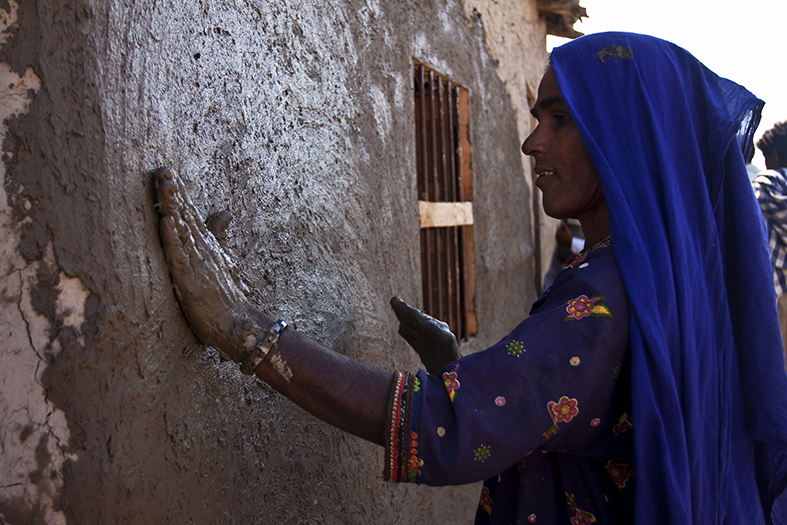Pakistan Settlements Flood Recovery Project (PSFRP) (Completed)
Background and Objectives
Background
 Pakistan experienced the worst floods in its history over the course of the Monsoons of 2010. The floods affected 7780 villages and 141 urban settlements in 84 districts out of a total of 121 districts in Pakistan and affected more than 18 million people. Updated figure shows that 805,694 houses were completely destroyed and many more damaged. UN-HABITAT proposed an integrated approach to help the affected villages in their efforts to recovery of shelter, water, sanitation, hygiene and community infrastructures. This project, “Pakistan Settlements Flood Recovery Project (PSFRP)” is the result of the Government of Japan’s response to UN-HABITAT’s appeal. The Government of Japan has allocated US $ 44.629 million to assist the floods affected people of Pakistan.
Pakistan experienced the worst floods in its history over the course of the Monsoons of 2010. The floods affected 7780 villages and 141 urban settlements in 84 districts out of a total of 121 districts in Pakistan and affected more than 18 million people. Updated figure shows that 805,694 houses were completely destroyed and many more damaged. UN-HABITAT proposed an integrated approach to help the affected villages in their efforts to recovery of shelter, water, sanitation, hygiene and community infrastructures. This project, “Pakistan Settlements Flood Recovery Project (PSFRP)” is the result of the Government of Japan’s response to UN-HABITAT’s appeal. The Government of Japan has allocated US $ 44.629 million to assist the floods affected people of Pakistan.
Objectives
The overall objective of the project is to help the floods affected population in their recovery by:
- Provision of shelters to 30,000 extremely vulnerable and vulnerable households, such as female-headed households.

- Reducing incidence of mortality and morbidity due to waterborne diseases through the restoration and rehabilitation of water, sanitation and hygiene (WASH) facilities.
- Enhancing sustainable community recovery and return through the rehabilitation of community infrastructures and provision of short-term earning opportunities.
- Assisting affected beneficiaries and community organizations through capacity building trainings.
Activities
The activities include:
- Provision of shelters
- Water, Sanitation and Hygiene (WASH) activities
- Rehabilitation of community infrastructures and facilities
Results
- Integrated approach to shelter, WASH, community infrastructures benefitted entire communities, not just individual households.
- 30,000 shelters built in 4 provinces.
- Salvaged building materials reused and recycled for shelter recovery.
- Semi-skilled artisans trained and provided with training toolkits.
- Provision of latrines ensured for all provided with shelters.
- Access to water, sanitation and hygiene facilities increased, especially for vulnerable groups.
- Health risks due to use of unsafe drinking water significantly reduced.
- Living conditions improved, especially for women and children, for 67,000 families through promotional messages on positive hygiene behaviors.
- Local employment opportunity enhanced through activities of constructions.
- Community infrastructure rehabilitated in 16 of the worst affected districts.
- Coordination between communities and local governments enhanced.
Development Partners / Partners
Development partner: Government of Japan
Partner: Pakistan National Disaster Management Authority (NDMA)
